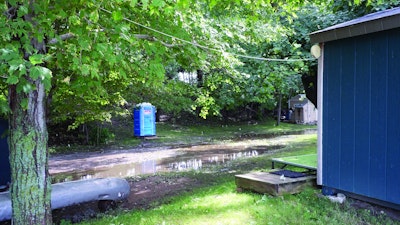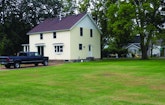
This month and next, we'll look at proper site evaluation procedures and techniques. While it's not necessarily part of an installer's responsibility to conduct the site evaluation, it is the installer's job to understand the evaluation and to recognize any problems or discrepancies. We covered this material as a part of an installer workshop we conducted at the Pumper and Cleaner Environmental Expo last February in Indianapolis.
In these discussions, we highlight that you need to follow any local and state codes. Those codes or rules have specific requirements covering site evaluation practices, including such things as minimum setback distances and the number of potential soil treatment sites to be identified and evaluated on each lot. Knowing the requirements and having a preliminary discussion with the planning and zoning personnel can save a lot of time and effort. Here is some practical advice.
Get complete information
As we travel, we see more permitting authorities requiring the identification of at least two suitable soil treatment sites on new lots. For each, a site evaluation needs to be conducted to identify both surface and subsurface conditions a designer can use to locate the system and provide a detailed design. Record information on the appropriate state or local forms, and provide a detailed, to-scale site map, locating all required information to be used in design.
Information captured and reported starts with the site location. This means identifying the property by township, range and section or other unique identifiers, as required by the local unit of government. Property owners also should be identified.
If the site is within a special management area, such as a wellhead protection area or nutrient management zone, that should be noted. If the property is in such a zone, there usually are special design requirements. As part of the site evaluation, note these requirements and take them into account in the design process.
Estimating flow
Gather information on the size and type of residence or other establishment the system is being designed for. This information will help determine estimated daily sewage flows, which will then dictate septic tank size and soil treatment area requirements.
For residences, flow is often estimated based on the number of bedrooms – the typical volume is 150 gallons per day per bedroom. These estimates vary by jurisdiction, and we see many places requiring a per-fixture estimate, as well. This reflects changing water use habits that may significantly affect flow from a household.
It is also important to discuss other issues that might affect flow. For example, if the owner plans to run a day care center, photography studio or hair styling shop from the home, that should be factored into the flow estimates. Also identify and locate on the plan any other planned buildings or amenities. Include decks, patios, swimming pools and hot tubs, as well as outbuildings like garages, workshops and gazebos.
Identify and locate any potential surface limiting conditions. These include slopes, drainageways or washes. Measure all appropriate setbacks and remove areas within those setbacks from consideration for system location. Major features requiring setbacks include property lines, water supply wells, public water supplies, existing or planned buildings or improvements, and any existing drainage or utility easements.
Indicate any floodplain designations or elevations from published flood data or from other sources, or from estimates accepted by the permitting authority. In the Midwest where we are from, these conditions are well-documented. In areas of the Southwest, you'll need to identify setbacks from the highest point on the banks of washes or arroyos.
It is also important to identify the location of the proposed site on the landscape if natural drainage will affect the system. If the system will lie where excess water might run onto the site, make note of it and adjust the site or deal with the water as part of the design. One mistake we often see is locating systems in areas that naturally collect water. Any water beyond the sewage to be put into the system is detrimental to proper operation.
Check the soils
From initial site observations and from existing soil surveys, obtain and record the soil characteristics at the proposed soil treatment areas. Essential items include the soil map, the soil mapping units, landscape position, parent material, and flooding or ponding potential.
Identify landscape characteristics, such as slope range and depth, to limiting conditions as identified in the soil survey. These include soil texture, periodically saturated depths, bedrock depth, soil color, depth to redoximorphic features, and soil structure and consistence. You'll compare this information to data collected in the field portion of the site evaluation.
The system selected to serve the site needs to fit the information collected and some other considerations. So, water use, type of house or other establishment, area available, and depth to potential limiting conditions will affect the kind of system selected: conventional, pump to pressure distribution, or use of newer pretreatment technologies.
Now is not too early in the process to also consider the long-term maintenance and management issues. Think about future access to the system needs. Is it possible to get to the site to maintain the system components? For instance, if the septic tank is located more than 100 feet horizontal and 25 feet vertical from the point where a pump truck can park, it will be very difficult to clean the septic tank properly.
There are a whole host of other access problems to consider, such as whether any proposed amenities are in the way, and whether trees planted or other vegetation to be planted will interfere. Next month, we'll look at other site evaluation procedures.








